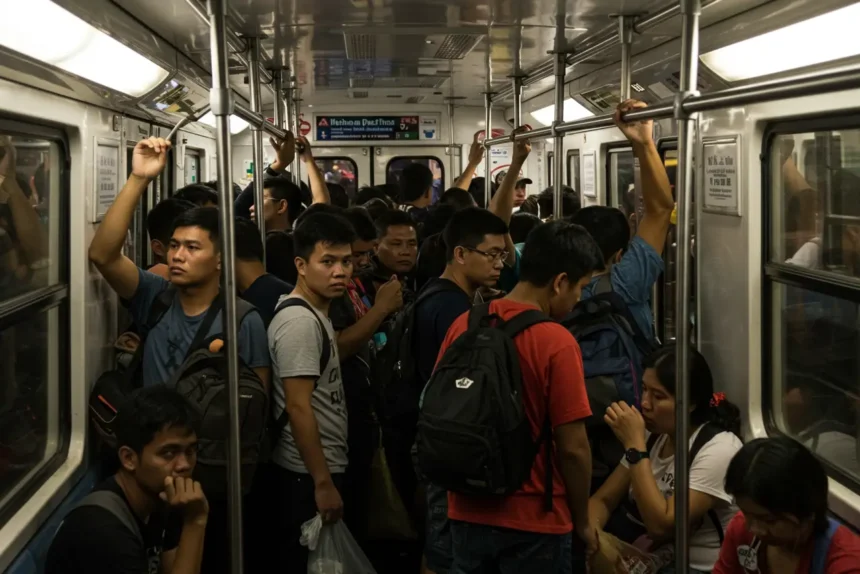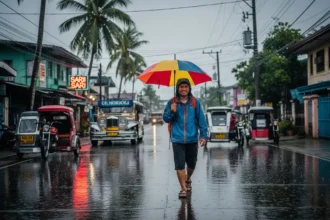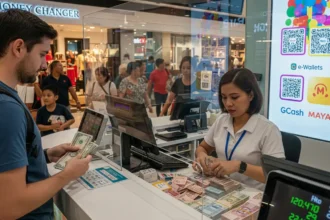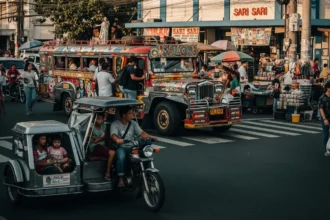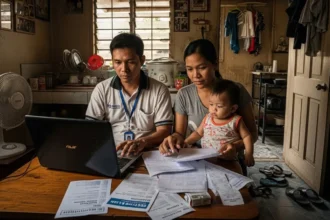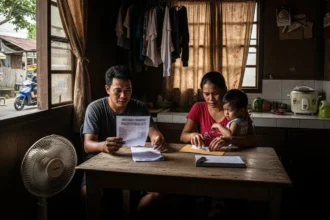If you’ve ever lined up for the MRT at rush hour, squeezed into a jeepney on EDSA, or sat through a two-hour ride that should’ve taken 30 minutes, you know the Manila commute is no joke. For millions of Filipinos, traffic jams, packed buses, and endless waiting are just part of daily life.
- 🚦 Understanding the Manila Commute
- 🕐 Best Times to Travel & Smart Scheduling
- 💡 Essential Commuter Hacks
- 🚌 Safety & Comfort Tips
- 📱 Tech & Digital Hacks for Commuters
- 🌆 Alternative Travel Options
- ✅ Key Takeaways for Surviving the Manila Commute
- ❓ FAQs About Commuting in Manila
- 🌟 Thriving in the Manila Commute
- 🧭 References
But surviving the metro grind doesn’t have to feel like torture. With the right Manila commute tips and a few practical Manila commuting hacks, you can turn those stressful hours into manageable (and even productive) parts of your day. This isn’t just another rant about traffic-it’s your playbook to survive and thrive as a Pinoy commuter.
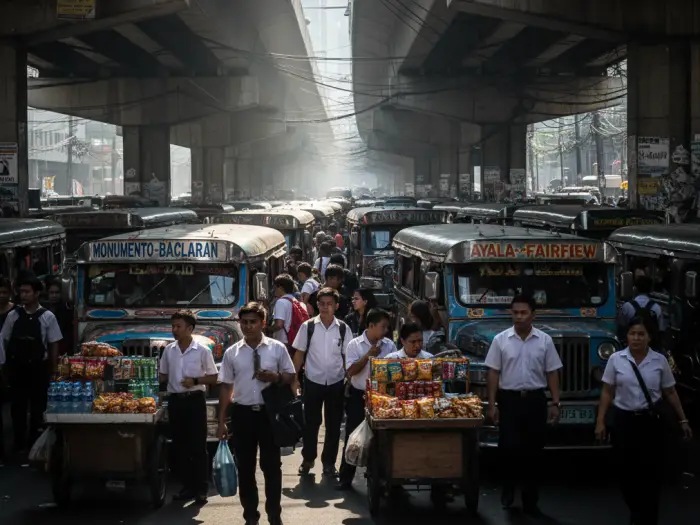
🚦 Understanding the Manila Commute
If there’s one thing every Pinoy knows by heart, it’s the daily struggle of commuting in Metro Manila. Whether you’re squeezing into a packed MRT, waiting for a jeepney under the scorching sun, or crawling along EDSA inside a bus, the experience is almost a rite of passage for city life. Manila is ranked as one of the most congested cities in the world, and for millions of commuters, navigating the chaos is part of the daily grind.
At its core, the Manila commute is shaped by two main factors: traffic congestion and limited transport infrastructure. Rush hour can start as early as 6 AM and last well into 10 AM, only to return with a vengeance around 5 PM until late at night. Main roads like EDSA and C5 often look like parking lots during peak hours, while side streets (or “alternate routes”) aren’t much better once drivers try to escape the gridlock.
Commuters rely on a mix of traditional and modern transport modes. Jeepneys remain the king of the road, offering affordable rides to almost every corner of the metro. Buses (both regular and point-to-point or P2P) handle longer distances, while tricycles and pedicabs dominate in inner barangay routes. For speed, many turn to the MRT and LRT, though these trains are notorious for long queues and occasional breakdowns. Meanwhile, app-based rides like Grab or motorcycle taxis such as Angkas and JoyRide provide convenience-but at a higher cost.
What makes commuting in Manila particularly challenging is unpredictability. A 10-kilometer trip might take 20 minutes one day, then two hours the next, depending on weather, accidents, or traffic enforcers’ schemes. It’s this uncertainty that turns commuting into both a test of patience and a daily tactical exercise.
But here’s the good news: once you understand the patterns of the Manila commute, you can learn how to hack the system-choosing the right transport mode, avoiding peak times, and even making the most of those long rides. That’s where travel tips and hacks come in, helping you turn “commuter hell” into something a little more bearable-and maybe even productive.
| Mode of Transport | Pros ✅ | Cons ❌ | Best For |
|---|---|---|---|
| Jeepney | Cheapest fare, wide routes, very Pinoy experience | Crowded, slow in traffic, no fixed schedule | Short-distance daily commutes |
| Bus (Regular & P2P) | Covers long routes, P2P buses are faster & comfier | Regular buses get stuck in EDSA traffic | Office workers, longer trips |
| MRT/LRT | Fastest way to skip traffic, cheap fare | Long lines, frequent delays/breakdowns | Daily commuters, students |
| Tricycle / Pedicab | Convenient for inner roads & barangays | Expensive per km, not ideal for long rides | First/last-mile travel |
| Grab / Taxi | Comfortable, cashless option, safer at night | Surge pricing, expensive vs. jeep/bus | Urgent trips, late-night commutes |
| Motorcycle Taxi (Angkas, JoyRide) | Fast, weaves through traffic, app-based | Riskier in rain, limited luggage | Beating rush hour, solo riders |
| Cycling / Walking | Free, eco-friendly, healthy | Heat, pollution, road safety issues | Short distances, fitness-conscious commuters |
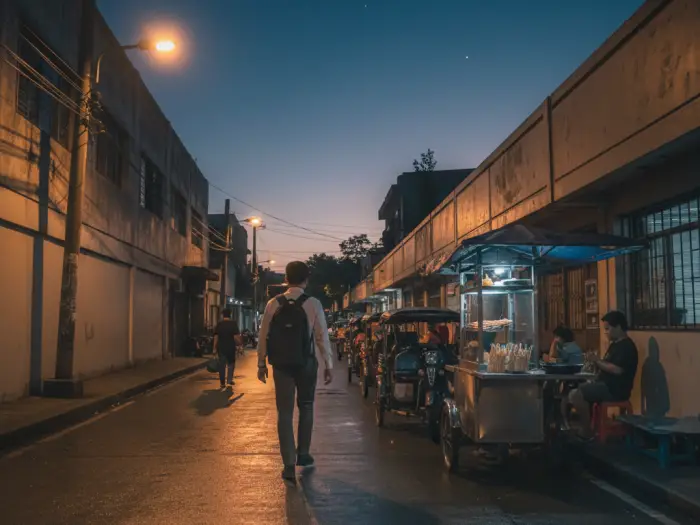
🕐 Best Times to Travel & Smart Scheduling
One of the biggest commuter hacks in Manila is timing your trips wisely. With traffic so unpredictable, even a difference of 30 minutes can mean an extra hour on the road. Knowing when to leave-and when not to-can save you from the worst of the gridlock.
🚫 Avoiding Rush Hour
- Morning rush: 6:00 AM to 9:00 AM – MRT queues are longest, buses and jeepneys are jam-packed, and EDSA turns into a parking lot.
- Evening rush: 5:00 PM to 9:00 PM – expect bottlenecks everywhere as workers and students head home.
- Friday “carmageddon”: Traffic on Fridays is always heavier, especially payday weekends. If you can avoid long trips during these times, do so.
⏰ Best Times to Travel
- Early birds win: Leaving before 6:00 AM helps you beat the surge of commuters. You might even snag a seat on the MRT.
- Late-night commutes: After 9:00 PM, roads are much clearer, and ride-hailing fares usually drop. Just keep safety in mind if traveling alone.
- Midday sweet spot: Between 10:00 AM and 3:00 PM is the lightest time for both road and train commuters-perfect for errands or flexible work schedules.
📱 Smart Scheduling Hacks
- Use apps for real-time updates: Google Maps, Sakay.ph, and Waze can help you estimate travel times and suggest the fastest routes.
- Plan buffer time: Always add at least 30 minutes to an hour for unexpected delays.
- Flexible work setups: If your job allows, negotiate for staggered hours or partial work-from-home to avoid peak times.
- Batch your errands: Instead of going out multiple times a week, combine tasks into one trip to minimize stress and expenses.
🌧 Weather Watch
Manila traffic worsens during rainy days and floods. Check weather forecasts before heading out, and leave earlier if heavy rain is expected-roads can flood quickly and double your travel time.
By syncing your schedule with these time-tested hacks, you’ll not only cut down on stress but also reclaim more hours of your day. In a city where traffic eats away at productivity, mastering the clock is half the battle.
| Time of Day | Traffic Condition | Best For | Notes |
|---|---|---|---|
| Before 6:00 AM | Light | Early work, airport trips | Beat the rush, faster MRT rides |
| 6:00–9:00 AM | Heavy (Morning Rush) | Students, office workers | MRT queues, buses/jeepneys full |
| 10:00 AM–3:00 PM | Light to Moderate | Errands, meetings | Sweet spot for flexible schedules |
| 5:00–9:00 PM | Very Heavy (Evening Rush) | End of workday | Expect EDSA & C5 gridlock |
| After 9:00 PM | Light | Night shift, late rides | Safer in groups, Grab fares lower |
| Rainy Days | Extremely Heavy | N/A | Allow extra travel time; flooding likely |
| Fridays & Paydays | Worst | N/A | “Carmageddon” – avoid long trips |
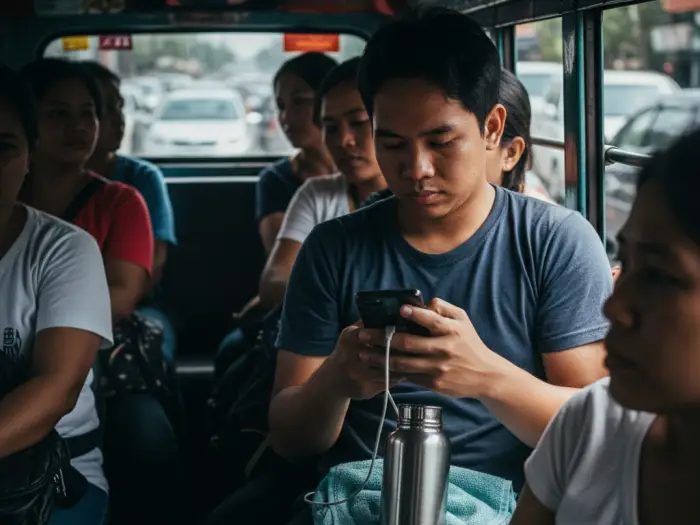
💡 Essential Commuter Hacks
The Manila commute is often unpredictable-you never really know if your trip will take 30 minutes or 2 hours. That’s why every commuter needs a set of “diskarte hacks” to survive the daily grind. Here are comprehensive tips and strategies that can make your rides safer, more comfortable, and even more productive:
🎟️ Money Matters: Smooth Fare Handling
- Always carry coins and small bills. Jeepney and tricycle drivers can’t break large bills, and nothing’s more awkward than handing ₱500 for a ₱15 fare. Pro tip: keep a separate coin purse so you don’t have to dig through your wallet.
- Reloadable transport cards. The Beep card works for MRT, LRT, and EDSA carousel buses. Top up during off-hours to avoid long lines at stations.
- Cashless rides. Grab, Angkas, and some P2P buses allow GCash or PayMaya. Cashless payments are safer and quicker.
🔋 Power & Connectivity: Stay Charged and Online
- Power bank = lifesaver. Choose one with at least 10,000 mAh capacity-you’ll need it if stuck in traffic or when using navigation apps.
- Extra load/data. Keep at least ₱50 load or a prepaid data promo ready for emergencies. Apps like Sakay.ph, Waze, or Grab won’t work without internet.
- Offline maps. Download your usual routes on Google Maps so you can still navigate if data runs out.
🥤 Food & Hydration: Keep Energy Up
- Refillable water bottles. Staying hydrated helps especially under Manila’s intense heat. Insulated tumblers keep water cool for hours.
- Light snacks. Crackers, biscuits, or granola bars keep hunger away during unexpected delays. Avoid messy or smelly food (like siomai with chili oil) in cramped jeepneys.
- Breakfast-to-go. If you’re running late, grab a pack of pandesal or a banana-small, filling, and commuter-friendly.
🎒 Bags & Essentials: Pack Smart
- Lightweight bags. Opt for a small backpack or crossbody bag. Heavy bags make standing in long queues even harder.
- Anti-theft gear. Use bags with hidden zippers or wear them in front of you on trains. Crowded places are prime spots for pickpockets.
- Rain protection. A foldable umbrella or compact raincoat is a must-Manila weather can switch from scorching hot to downpour in minutes.
- Plastic bags or waterproof sleeves. Protect important documents or gadgets from sudden rain and flooding.
😌 Comfort & Survival: Beat the Stress
- Extra shirt or undershirt. Especially for office workers-changing clothes after a sweaty commute can boost confidence.
- Handkerchief or face towel. Useful for wiping sweat or protecting your face from dust and smoke.
- Earphones & podcasts. Turn commute time into “me time”-listen to music, podcasts, or audiobooks. This helps pass the hours more positively.
- Wet wipes & alcohol. Hygiene is key when commuting daily in crowded spaces. Always sanitize after handling money or touching rails.
- Face masks. Aside from health, they also protect from pollution along major roads.
📱 Tech Hacks: Apps That Save Time
- Sakay.ph – Best for navigating jeepney, bus, and train routes.
- Google Maps & Waze – Real-time traffic and alternate routes.
- Angkas/JoyRide/Move It – Motorcycle taxis to beat the rush.
- Grab – Safe, convenient option if you’re traveling late or with kids.
- MyMRT/LRT Apps – Check real-time train status before leaving.
👮 Safety First: Stay Alert
- Secure your belongings. Keep phones and wallets in front pockets or hidden compartments. Avoid using your phone openly in buses or while walking.
- Trust your instincts. If a vehicle feels unsafe or a route looks sketchy, don’t risk it.
- Buddy system. If commuting late at night, coordinate with a friend or officemate when possible.
- Know safe spots. In case of heavy rain, know where nearby malls, convenience stores, or terminals are to wait things out.
🌧 Rain & Flood Hacks: Wet Season Survival
- Rubber sandals or slip-ons. Always pack lightweight slippers to switch into when wading through floods.
- Foldable umbrella + raincoat combo. A raincoat keeps both hands free-handy for biking or carrying bags.
- Plastic covers. Grocery bags double as emergency shoe protectors.
- Check flood alerts. Apps like MMDA and PAGASA Twitter updates warn of flooded areas.
Pro Tip: Build your own “Commuter Survival Kit” with all the essentials-coins, power bank, umbrella, snacks, alcohol, and a change of shirt. Keep it ready so you don’t scramble every morning.
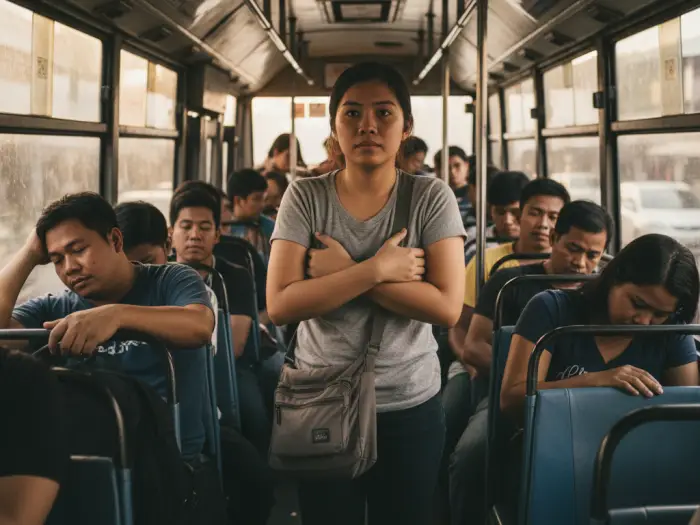
🚌 Safety & Comfort Tips
Commuting in Manila isn’t just about getting from point A to point B-it’s also about keeping yourself safe and as comfortable as possible in the middle of chaos. Here are some essential safety and comfort tips every Pinoy commuter should practice:
🛡️ Safety Tips for Everyday Commuters
- Keep valuables hidden. Don’t flash your phone, jewelry, or wallet while on the jeepney or bus. Snatchers are quick and opportunistic.
- Bags in front. In MRT, LRT, or crowded jeepneys, always wear your bag in front of you. This keeps pickpockets from reaching into zippers unnoticed.
- Stay alert on your phone. If you need to use it while commuting, hold it firmly with both hands, and avoid sitting near open jeepney exits or bus doors.
- Know your drop-off points. Familiarize yourself with landmarks instead of relying solely on apps-you’ll avoid missing stops and wandering into unsafe areas.
- Late-night commuting. If you’re traveling after 10 PM, choose safer options like Grab, P2P buses, or traveling with a buddy instead of risking empty jeepneys or tricycles.
- Trust your gut. If a situation or passenger feels suspicious, don’t ignore your instincts-transfer vehicles or move closer to well-lit, crowded areas.
🌧 Weather & Emergency Preparedness
- Rain-proof your commute. Always carry a foldable umbrella and a small raincoat. Manila floods can come out of nowhere, and staying dry protects you from colds or worse.
- Wear durable shoes. Closed shoes or rubber sandals are best during the rainy season-heels or thin flats are impractical when streets flood.
- Have emergency contacts saved. Save numbers of local barangay hotlines, MMDA, or family members in case you get stranded.
😌 Comfort Hacks for Stress-Free Rides
- Dress smart. Wear breathable fabrics (cotton, dri-fit) to stay cool in Manila’s humid weather. Always keep a face towel or panyo handy.
- Bring an extra shirt. For office workers, changing into a fresh shirt after commuting can make you feel more confident and comfortable.
- Earphones = sanity savers. Podcasts, music, or audiobooks can turn long MRT lines or bumper-to-bumper traffic into productive or relaxing time.
- Sleep carefully. If you need to nap, secure your bag and set an alarm before your stop. Light sleep only-stay alert enough to sense your surroundings.
- Hand wipes & alcohol. Commuting means handling money, rails, and crowded spaces. Always sanitize to avoid germs and illnesses.
🚏 Commuter Etiquette for a Smoother Ride
- Give way to seniors, PWDs, and pregnant women. A little respect makes the commute better for everyone.
- Queue properly. MRT and bus lines are tough enough without line-cutters-be the commuter who makes it easier, not harder.
- Control your bags. Keep backpacks on your lap in crowded vehicles to avoid bumping other passengers.
- Keep noise low. Use earphones for music or calls-public transport is already loud enough.
By combining safety awareness with comfort hacks, you can make even Manila’s toughest commutes a little less stressful. Remember: a commuter who is alert, prepared, and considerate not only survives the daily grind but also helps create a better commuting culture for everyone.
| ✅ Do’s | ❌ Don’ts |
|---|---|
| Keep your bag in front of you in crowded places | Flash phones, jewelry, or cash openly |
| Use small bills/coins for jeepney & tricycle fare | Hand ₱500 or ₱1000 for a ₱15 ride |
| Be alert when using your phone in public | Doze off deeply without securing belongings |
| Carry an umbrella, raincoat, and extra shirt | Rely solely on others to lend you cover during rain |
| Use cashless options (GCash, GrabPay, Beep card) | Always line up for single tickets during rush hour |
| Offer your seat to seniors, PWDs, and pregnant women | Cut lines or push into MRT/LRT queues |
| Save emergency contacts in your phone | Ignore suspicious situations or gut instincts |
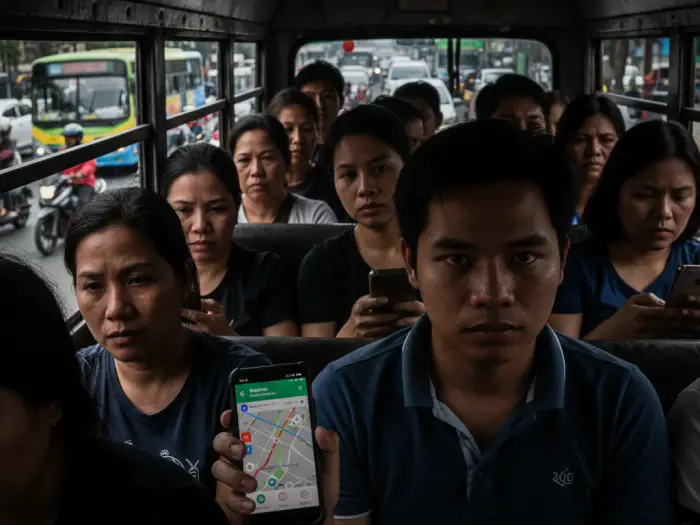
📱 Tech & Digital Hacks for Commuters
Technology has become every commuter’s secret weapon in Manila. With the right apps and digital habits, you can save time, money, and even your sanity. Here are some must-know hacks:
📍 Navigation & Route Planning
- Google Maps & Waze – Real-time traffic updates, estimated travel times, and alternate routes. Essential if you’re driving, taking Grab, or even walking short distances.
- Sakay.ph – Perfect for planning jeepney, bus, and train combinations. It gives exact routes, fares, and ETA-super helpful for new commuters.
- Move It / Angkas / JoyRide – Motorcycle taxi apps that cut through traffic when you’re running late.
🚉 Train & Bus Tools
- MyMRT & LRT Status Apps – Check live updates on train breakdowns, queue times, and delays before leaving home.
- EDSA Carousel Info Pages – Follow MMDA’s official updates on bus schedules and reroutes during heavy traffic or protests.
💳 Cashless & Payments
- Beep Card. Use for MRT/LRT, EDSA buses, and some jeepneys. Load ahead to avoid queueing.
- GCash / PayMaya. Many Grab rides, Angkas trips, and even sari-sari stores accept e-wallet payments. Carry less cash, travel safer.
- GrabPay / Maya Cards. Can double as emergency backup when ATMs are down.
🎧 Entertainment & Productivity
- Spotify / Podcasts. Turn traffic jams into “learning time” with playlists, self-improvement podcasts, or audiobooks.
- E-books / Wattpad / Kindle. Perfect for long jeepney or bus rides-carry an entire library in your phone.
- Offline downloads. Save movies, music, or lectures offline in case of poor signal underground (MRT) or in traffic dead zones.
🔐 Safety Tech
- Location sharing. Use Messenger, WhatsApp, or GCash’s built-in features to share your live location with family or friends during late-night trips.
- Emergency apps. The Philippine Red Cross and MMDA apps provide hotlines, first aid guides, and disaster alerts.
- Phone security. Set up “Find My Device” or iCloud tracking in case your phone is stolen or lost in transit.
🧑💻 Pro Tips
- Battery savers. Turn on “Battery Saver Mode” while commuting to stretch your phone’s life until you reach your destination.
- Dual SIM setup. Globe + Smart or DITO combo helps ensure you always have coverage on the road.
- Use headsets with one ear free. Stay aware of surroundings while still listening to audio.
With these tech hacks, you can turn your daily commute into something smarter, safer, and even more enjoyable. In a city where traffic is inevitable, the commuter with the right digital tools always has the edge.
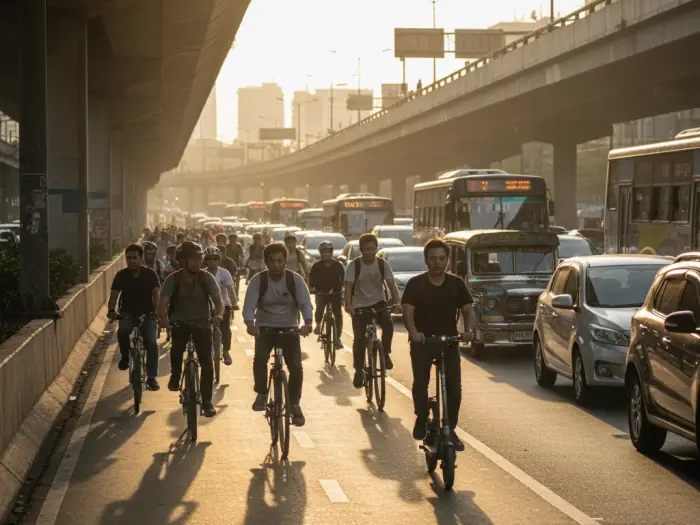
🌆 Alternative Travel Options
While most Pinoys rely on jeepneys, buses, and trains, there are alternative travel options that can help you avoid the worst of Manila’s commuting chaos. These aren’t always the cheapest, but they can save you time, energy, and even improve your well-being if used wisely.
🚴 Cycling in the City
In recent years, more Filipinos have turned to bicycles as a practical way to beat traffic. Cycling is eco-friendly, budget-friendly, and a good form of daily exercise. The government has built some bike lanes along EDSA and other major roads, though many remain inconsistent and sometimes blocked. If you’re considering biking to work:
- Invest in safety gear: helmet, lights, and reflective vests.
- Use waterproof bags or panniers to protect your things from rain.
- Learn the safest side streets in your route; avoid highways whenever possible.
- Join local cycling groups for added security and route tips.
Cycling isn’t for everyone, but for those who live within 5–10 kilometers of work or school, it can be one of the most reliable ways to move around the city.
🚐 Carpooling and Ride-Sharing
Carpooling has always been part of Pinoy commuting culture-whether it’s officemates splitting fuel or neighbors taking turns driving. Today, carpool apps and Facebook groups make it easier to find ride buddies. This not only saves money but also reduces the number of cars on the road. Some offices even organize shuttle services or van pooling for employees, which can be a safer and more predictable option compared to public transport.
🚌 Premium and P2P (Point-to-Point) Buses
Unlike regular city buses that stop almost everywhere, P2P buses run fixed routes with limited stops, meaning fewer delays. They are air-conditioned, safer, and usually on time. They may cost more than jeepneys, but for many, the added comfort and reliability are worth it. If you work in business districts like Makati, BGC, or Ortigas, check if there’s a P2P bus route from your area-it might save you both time and stress.
🚖 Motorcycle Taxis
Apps like Angkas, JoyRide, and Move It have become game-changers for those who need to cut through traffic fast. They are more affordable than Grab cars and significantly quicker during rush hour. The downside is exposure to the elements and higher risk during bad weather. Riders are required to provide helmets, and passengers should always check driver ratings before booking.
🚤 Ferry and Water Transport
Often overlooked, the Pasig River Ferry Service is an underrated alternative for those traveling along its routes. With dedicated stations and no traffic jams on the water, it offers a surprisingly smooth ride across parts of Metro Manila. It’s not as widespread as land transport, but if your route happens to match, it’s worth considering.
Exploring these alternatives can help you escape the daily grind of traditional commuting. Mixing and matching-say, biking to a P2P terminal or using a motorcycle taxi when you’re running late-can create a flexible system that works for your schedule and lifestyle.
| Option | Pros ✅ | Cons ❌ | Best For |
|---|---|---|---|
| Cycling | Eco-friendly, cheap, good exercise | Safety risks, exposure to heat/rain, limited bike lanes | Short commutes (5–10 km), fitness-conscious commuters |
| Carpooling | Saves money, social, reduces cars on road | Depends on others’ schedules, limited flexibility | Office workers, neighbors, group travel |
| P2P Buses | Comfortable, aircon, fewer stops, more reliable | Higher fare than jeepneys/buses, fixed routes only | Daily office commuters in business districts |
| Motorcycle Taxis (Angkas/JoyRide/Move It) | Fastest in rush hour, affordable vs. Grab | Not ideal in rain, limited luggage space | Urgent trips, solo commuters |
| Pasig River Ferry | No road traffic, scenic ride | Limited routes and schedules | Commuters near Pasig River corridor |
✅ Key Takeaways for Surviving the Manila Commute
Manila traffic may feel overwhelming, but with the right hacks and mindset, commuting doesn’t have to be pure stress. Here’s your quick checklist of strategies to survive (and even thrive) in the daily grind:
🕐 Timing & Scheduling
- Leave before 6 AM or travel after 9 PM to avoid peak hours.
- Use Google Maps, Waze, or Sakay.ph for real-time updates.
- Add at least 30–60 minutes buffer time for unexpected delays.
🎒 Commuter Essentials
- Coins and small bills for jeepneys and tricycles.
- Power bank, extra load/data, and offline maps.
- Foldable umbrella, raincoat, and waterproof bag covers.
- Snacks, water, and an extra shirt for emergencies.
🛡️ Safety & Security
- Keep bags in front of you in crowded areas.
- Avoid showing gadgets or valuables in public.
- Share your live location when traveling late at night.
- Trust your instincts-transfer vehicles if something feels unsafe.
😌 Comfort & Productivity
- Wear light, breathable clothes; bring a face towel.
- Use commute time for podcasts, audiobooks, or e-books.
- Choose P2P buses or Angkas for a more comfortable/faster ride when budget allows.
- Batch errands into one trip to save both time and money.
🌆 Alternative Options
- Consider cycling for short distances if safe routes are available.
- Try carpooling with officemates or neighbors.
- Use Pasig River ferry if it matches your route-zero road traffic!
By following this commuter survival checklist, you can take back some control in a city where traffic often feels unstoppable. It’s all about being prepared, flexible, and street-smart-the true diskarte of every seasoned Pinoy commuter.
❓ FAQs About Commuting in Manila
1. What’s the cheapest way to commute in Manila?
The jeepney remains the most budget-friendly mode of transport, with minimum fares starting at ₱13–15. For short barangay trips, tricycles may be more convenient but costlier per kilometer.
2. How much should I budget daily for commuting?
Most commuters spend between ₱100–₱250 per day depending on distance, routes, and whether they use premium services like P2P or Grab. Budget-conscious commuters can save by sticking to jeepneys, buses, and MRT/LRT.
3. Is it safe to commute at night?
Yes, but extra caution is needed. If possible, use ride-hailing apps like Grab or motorcycle taxis instead of waiting alone in dark terminals, and always share your live location with someone.
4. What’s the best app for planning trips in Manila?
Sakay.ph is excellent for finding jeepney, bus, and train routes, while Google Maps and Waze are reliable for real-time traffic updates. A combination of these apps gives the best results.
5. Can you bike to work in Manila safely?
It depends on your route and preparation. While there are bike lanes along EDSA and select roads, they’re not always consistent, so cyclists should wear protective gear and stick to safer side streets.
6. What’s the fastest way to beat rush hour?
Motorcycle taxis like Angkas or JoyRide are usually the quickest, weaving through traffic with ease. For those who prefer not to ride a motorbike, P2P buses offer a faster and more reliable alternative.
7. How can I make my commute more productive?
Many commuters use the time to listen to podcasts, audiobooks, or online courses. Others prepare work drafts offline on their phones or simply enjoy entertainment like e-books and downloaded shows.
8. What should I always carry in my commuter bag?
Essential items include coins, a power bank, an umbrella, water, and snacks. It’s also smart to bring alcohol or wipes, a small towel, and an extra shirt for emergencies.
9. Are P2P buses worth the higher fare?
Yes, for many commuters they are. P2P buses offer comfort, air-conditioning, and fewer stops, which makes them much faster and more reliable than regular buses on the same routes.
10. What’s the worst day to commute in Manila?
Fridays-especially payday Fridays-are notorious for “carmageddon,” with heavier traffic than usual. Rainy Fridays are the absolute worst, so if you can, plan errands or trips on other days.
🌟 Thriving in the Manila Commute
Commuting in Manila will always be a challenge-it’s noisy, unpredictable, and sometimes downright exhausting. But every Pinoy knows that the daily commute is also part of our shared story: the small talk with strangers, the diskarte of finding shortcuts, and the patience we build from surviving endless traffic.
By arming yourself with smart travel hacks, the right apps, and a commuter survival kit, you can transform what feels like wasted time into something productive or even meaningful. Whether you’re listening to your favorite podcast, reading an e-book, or simply observing the colorful chaos of city life, commuting doesn’t have to be pure stress.
At the end of the day, thriving in the Manila commute isn’t just about getting to your destination-it’s about finding rhythm, balance, and resilience in the journey itself. Master the art of timing, preparation, and safety, and you’ll discover that even in “commuter hell,” you can carve out little pockets of comfort and control.
🧭 References
-
TripZilla – Manila commute & transportation guide
-
Top Gear PH – EDSA Busway 2025 commuter tips & guide
-
Shoppable PH – LRT and MRT station guide 2025
-
Guide to the Philippines – Complete Manila travel guide
-
The Beat Asia – NAIA long commute tips & travel hacks
-
Sakay.ph – Metro Manila commute directions app
-
Over Here Manila – Local’s guide to surviving Manila commute
-
EasyRock – Commuter’s guide to EDSA Carousel



